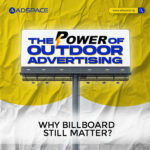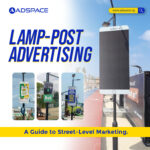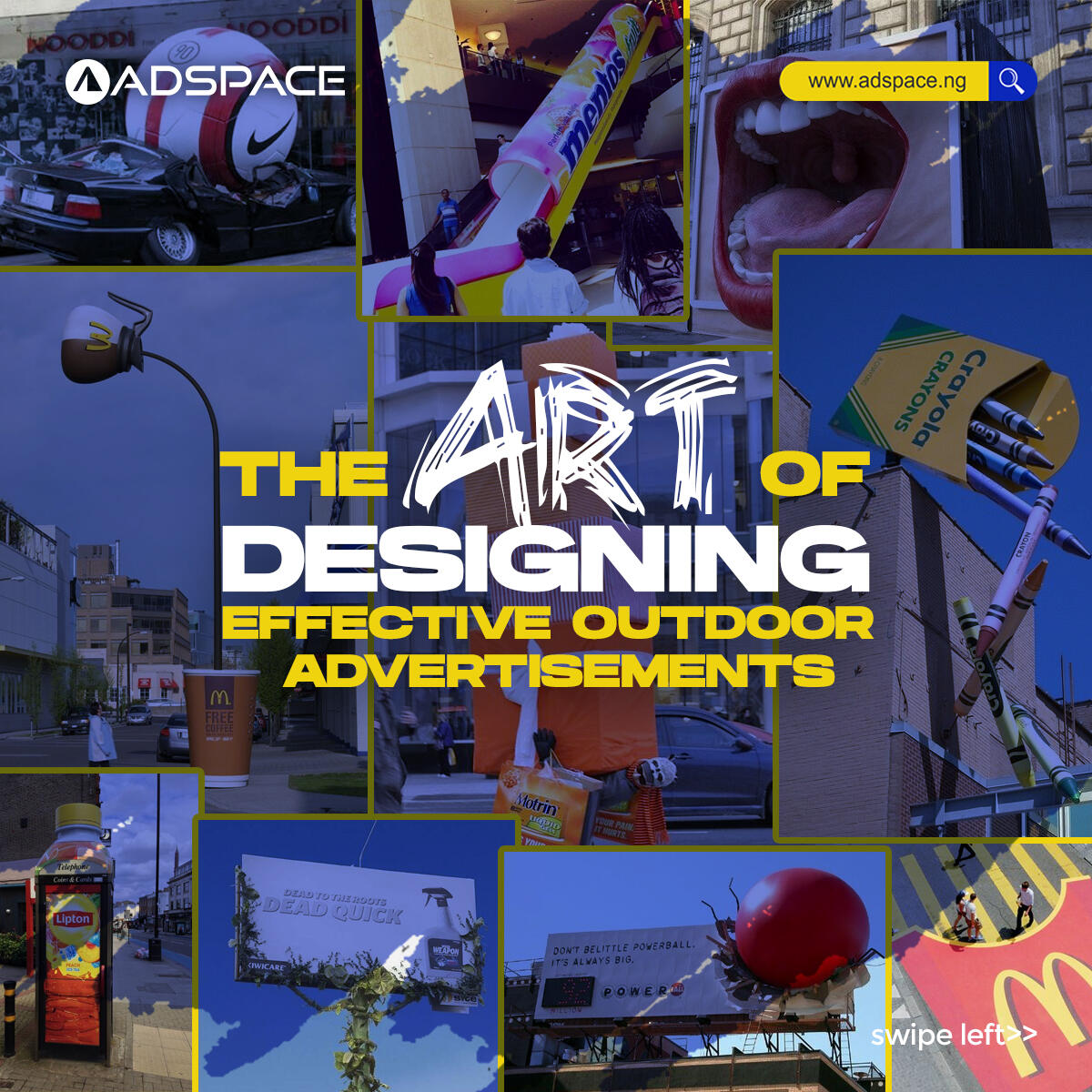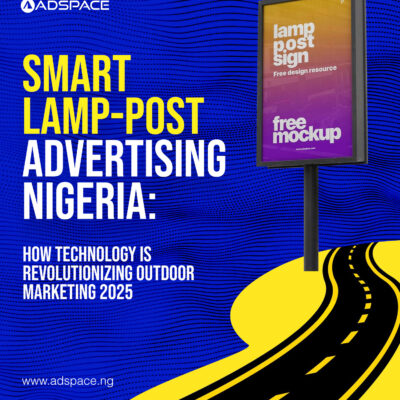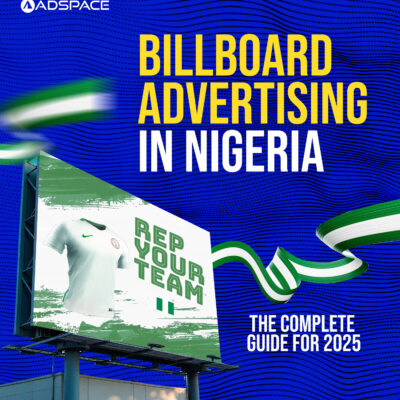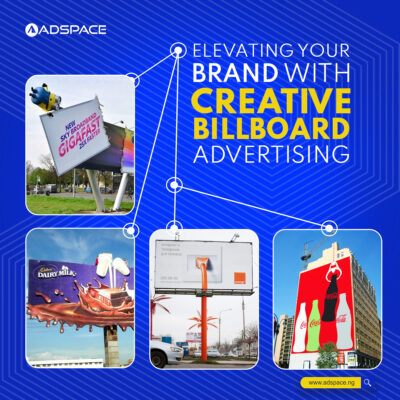I. Introduction
In the dynamic realm of outdoor advertising design, understanding its purpose and significance is crucial. This blog, focused on “outdoor advertising design,” unveils the art behind crafting effective campaigns, reflecting the evolving landscape of visual communication in the marketing world.
A. Definition and Significance of Outdoor Advertising
Outdoor advertising encompasses a diverse range of media formats, including billboards, transit ads, street furniture, and digital displays, that aim to reach consumers in public spaces. Its significance lies in its ability to deliver broad exposure, target specific demographics, and create lasting impressions.
B. Evolving Landscape of Outdoor Advertisement
The landscape of outdoor advertising is constantly evolving, driven by technological advancements and changing consumer behaviors. Digital billboards have emerged as a prominent format, offering dynamic content and interactivity. Additionally, the rise of mobile devices and location-based services is enabling advertisers to deliver targeted outdoor messages based on real-time data.
C. Purpose of the Blog: Unveiling the Art of Designing Effective Outdoor Ads
In this comprehensive blog post, we embark on a journey to unveil the art of designing effective outdoor ads. We’ll delve into the principles that underpin successful campaigns, explore creative techniques that engage audiences, and examine case studies that showcase the power of outdoor advertising.
II. Principles of Outdoor Advertising Design
A. Importance of Visual Elements
Visual elements are the cornerstone of effective outdoor advertising. They capture attention, convey messages, and evoke emotions.
1. Color Psychology
Color plays a pivotal role in outdoor advertising. Different colors evoke distinct psychological responses. Red, for instance, exudes energy and excitement, while blue conveys tranquility and trust. Understanding color psychology is crucial for selecting the right palette to align with the brand’s message and target audience.
2. Imagery and Graphics
Images and graphics have the power to tell stories, capture attention, and establish emotional connections with viewers. High-quality, impactful visuals can make the difference between an ad that blends into the background and one that commands attention.
B. Crafting Compelling Copy
While visuals are essential, compelling copy is equally important. Effective outdoor ad copy is concise, impactful, and memorable.
1. Conciseness and Impact
Outdoor ads have limited space, so every word counts. Craft concise, impactful copy that delivers the key message in a memorable way. Use strong verbs, vivid language, and a clear call to action.
2. Call-to-Action Strategies
A clear call to action (CTA) is crucial for guiding viewers towards the desired action. Use strong, actionable verbs that tell the audience what you want them to do, whether it’s visiting a website, making a purchase, or simply remembering your brand.
III. Effective Use of Space in Outdoor Advertising Design
A. Maximizing Impact with Limited Space
Outdoor ads often have limited space, so maximizing impact is essential.
1. Minimalism in Design
Embrace minimalism to avoid clutter and ensure the key message stands out. Use negative space effectively and prioritize the most important elements.
2. Focus on Key Message
With limited space, focus on conveying the core message in a clear and concise manner. Avoid unnecessary details that could distract from the main point.
B. Strategic Placement for Outdoor Ads
The placement of outdoor ads is crucial for reaching the target audience and achieving maximum impact.
1. Location Selection
Consider the demographics, traffic patterns, and overall context of the location when selecting ad placements. Choose locations with high visibility and relevance to the target audience.
2. Consideration of Surroundings
Ensure the ad complements its surroundings and doesn’t clash with the environment. Consider the visual harmony and overall aesthetics of the location.
IV. Creative Techniques for Outdoor Advertisement Design
Creativity is paramount in outdoor advertising, where the visual landscape is constantly competing for attention. Here are some key creative techniques to enhance outdoor advertising campaigns:
A. Incorporating Humor
Humor is a powerful tool that can grab attention, evoke positive emotions, and create memorable experiences. However, using humor effectively requires careful consideration and expertise. Ensure the humor aligns with the brand’s identity, is relevant to the target audience, and doesn’t offend or alienate any group.
B. Storytelling through Visuals
Effective outdoor ads use visuals to tell stories that resonate with viewers. By creating narratives, advertisers can tap into emotions, establish connections with the brand, and leave a lasting impression. Storytelling can be achieved through imagery, graphics, and even the layout of the ad.
C. Uniqueness and Innovation
Standing out from the crowd is crucial in outdoor advertising. Unique and innovative designs can capture attention, break through the clutter, and make a lasting impression. Consider using unconventional placements, incorporating interactivity, or exploring new creative techniques.
V. Measuring Success in Outdoor Advertising Design
Measuring success is essential for optimizing outdoor advertising campaigns and driving results. Here are key performance indicators (KPIs) to consider:
A. Key Performance Indicators (KPIs)
Audience Reach: Determine the number of people exposed to the ad.
Brand Awareness: Measure the increase in brand recognition and recall.
Brand Favorability: Assess the overall sentiment towards the brand.
Sales and Conversions: Track the impact on sales and conversions.
B. Analytics and Data-driven Insights
Harness the power of analytics to gain insights into campaign performance. Utilize metrics such as impressions, clicks, and dwell time to identify what’s working and what needs improvement. Adapt designs based on data-driven insights to optimize campaigns for maximum impact.
VI. Case Studies and Examples in Outdoor Advertising Design
Studying successful and failed outdoor ad campaigns can provide valuable lessons and inspire creative solutions. Here are some examples to consider:
A. Successful Outdoor Ad Campaigns
Always‘s “Keeps going long after the initial impact” campaign, using slow-motion imagery, resonated with viewers and achieved high recall.
Nike‘s “If you let me play” campaign, featuring young girls playing sports, transcended gender stereotypes and sparked global conversations.
Guinness‘s “The perfect pint” campaign, using humor and storytelling, created a memorable brand experience.
B. Learning from Outdoor Design Failures
Pepsi’s “Live for now” campaign, featuring Kendall Jenner joining a protest, backfired due to cultural sensitivity concerns.
Volkswagen‘s “Dress for the occasion” campaign, featuring a car salesman making sexist remarks, drew criticism for its offensive tone.
GoPro‘s “The world’s most dangerous selfie” campaign, promoting dangerous stunts, raised safety concerns and damaged the brand’s reputation.
C. Cultural Considerations in Global Outdoor Advertising
Tailoring outdoor advertising designs to cultural sensitivities is crucial for avoiding offensive or insensitive content. Conduct thorough research on the target audience’s cultural norms, values, and sensitivities. Consider hiring local experts or partnering with agencies with cultural expertise.
VII. Conclusion
Outdoor advertising remains a powerful tool for capturing attention, conveying messages, and enhancing brand awareness. By understanding key principles, utilizing creative techniques, and measuring success, advertisers can create impactful campaigns that resonate with audiences and drive results.
FAQ: Unveiling the Art of Designing Effective Outdoor Ads
Q: What are the benefits of outdoor advertising compared to other media formats?
A: Outdoor advertising offers several benefits, including:
- Broad Reach: It can reach a large audience, including those who might not be reached through traditional media.
- Targeted Advertising: It can target specific demographics based on location and ad placement.
- Visual Impact: It can create a lasting impression through impactful visuals and creative messaging.
- Cost-Effectiveness: It can be a cost-effective way to reach a wide audience compared to some traditional media costs.
Q: What are some common mistakes to avoid in outdoor advertising design?
A: Here are common mistakes to avoid:
- Clutter: Trying to cram too much information into the ad, making it difficult to read and comprehend.
- Unclear Message: Failing to convey a clear and concise message that resonates with the audience.
- Poor Design: Ignoring the importance of visual aesthetics and design principles, leading to an unappealing ad.
- Irrelevant Location: Placing the ad in an area where it is not relevant to the target audience.
- Insensitivity: Ignoring cultural sensitivities or using offensive content that alienates the audience.
Q: What are some examples of innovative outdoor advertising campaigns?
A: Here are a few examples:
- KitKat: A 3D billboard in London that appeared to break apart and reveal a giant KitKat bar.
- Coca-Cola: A billboard in Colombia that dispensed free Coke when it rained.
- Netflix: A creative billboard mimicking a car crash scene to promote the show “Narcos.”
Q: What resources are available for those who want to learn more about designing effective outdoor ads?
A: Several resources are available, including:
- Outdoor Advertising Association (OAAA): The OAAA offers a wealth of information about outdoor advertising best practices, case studies, and industry trends.
- Advertising Age: This publication covers marketing and advertising news, including insights on outdoor advertising campaigns and trends.
- CreativeBloq: This website features articles and tutorials about design for various media, including outdoor advertising.
Q: What are the future trends in outdoor advertising design?
A: Some future trends include:
- Increased Interactive Technology: Interactive elements such as augmented reality and QR codes will enhance engagement and deliver a more immersive experience.
- Data-driven Targeting: Utilizing data to target audiences based on real-time information and location-based targeting.
- Social Media Integration: Incorporating social media elements into outdoor advertisements for multi-platform engagement.
- Sustainable Practices: Utilizing eco-friendly materials and practices in outdoor advertising design.
By understanding the principles, techniques, and examples of effective outdoor advertising, you can create impactful campaigns that capture attention, deliver your message, and build lasting brand connections.

